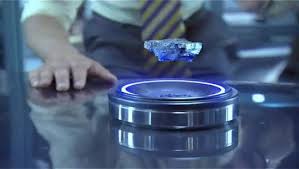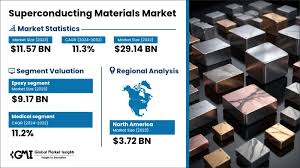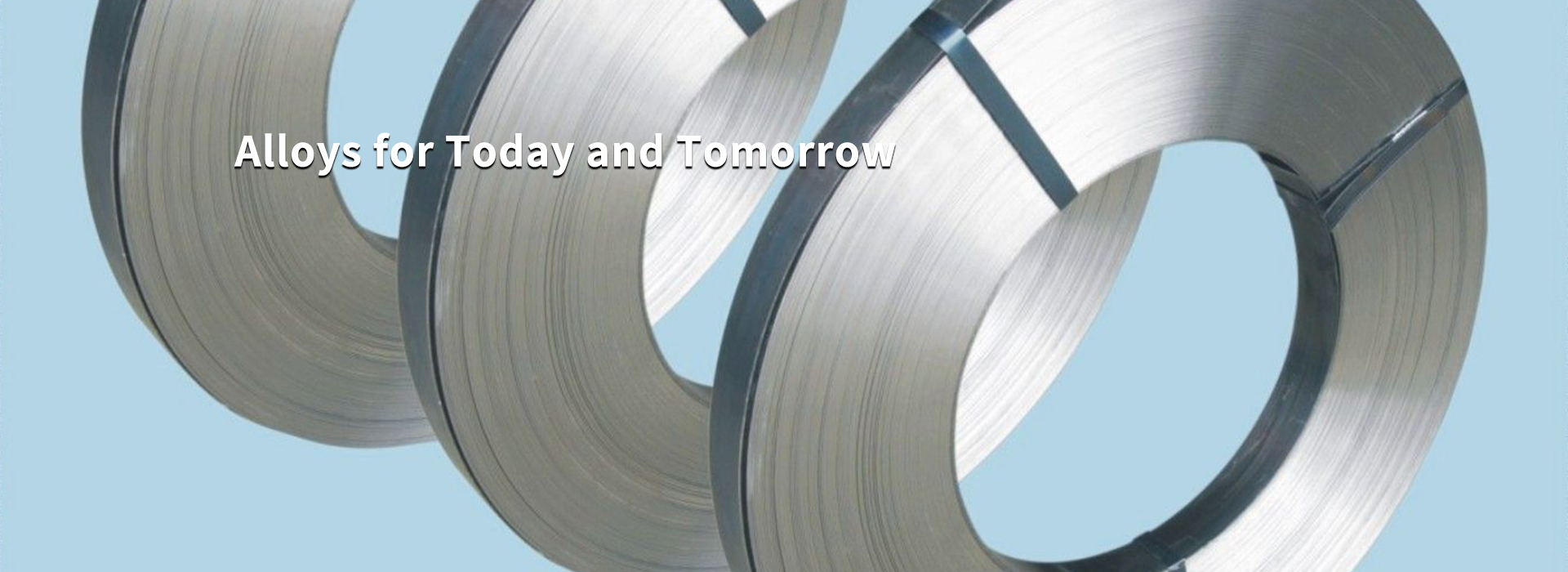INFORMATION
 Professional Blog
Professional Blog
 HOME > INFORMATION >
HOME > INFORMATION >
A new era of nickel based high-temperature superconductivity
2024-09-01
In the past two years, Chinese scientists have made breakthroughs in nickel based superconductivity research, not only discovering multiple nickel oxide superconductors, but also conducting in-depth and systematic exploration of their physical properties and mechanisms. The critical temperature of nickel based superconductors under high pressure exceeds the boiling point of liquid nitrogen, and they possess mechanisms similar to but different from copper oxide high-temperature superconductors and iron-based superconductors, making them a new generation of high-temperature superconducting family.
So, what are the family members of nickel based superconductivity? What new insights does its emergence bring to the study of high-temperature superconductivity? Is there hope for the practical application of nickel based superconductivity in the future?
Our R&D team has compiled this article to discuss nickel based superconductivity and the new era of high-temperature superconductivity it has pioneered.
Superconductivity is the first macroscopic quantum phenomenon discovered by humans. Superconducting materials have absolute zero resistance and complete diamagnetism, and have significant value in almost all electrical and magnetic applications. They are also one of the core materials of modern quantum technology. However, the biggest constraint on superconducting applications is that its working environment is often very low (below 4.2 K or -269 ℃), and in most cases, expensive liquid helium is required to maintain it. For over a hundred years, scientists have been constantly trying to break through the triple ceiling of the critical temperature of superconducting materials. They are: the first limit is 40 K (about -233 ℃), also known as the McMillan limit, which is the limit of traditional metal or alloy superconductors. They have been described by a well-established BCS theory; The second point is the boiling point of liquid nitrogen, which is 77 K (about -196 ℃). Superconducting materials that have entered this threshold mean that they can work in liquid nitrogen immersion, greatly reducing the cost of practical scale. Currently, only copper oxide superconductors can break through the boiling point of liquid nitrogen at normal pressure; The third factor is room temperature, generally defined as 300 K (about 27 ℃). So far, no room temperature superconductor has been found, and it is difficult to say whether it has practical value. The so-called "high-temperature superconductor" refers to a relatively high critical temperature, such as the ability to break through 40 K at normal pressure, or the possibility of breaking through 40 K in the corresponding structural system.
It has been almost 40 years since the discovery of copper oxide high-temperature superconductors in 1986, and they have not yet been fully practical on a large scale. On the one hand, people are eagerly looking forward to finding more high-temperature superconducting families that can be better utilized; On the other hand, people hope to comprehensively understand the microscopic mechanisms of high-temperature superconductivity to help predict superconducting materials at higher temperatures. Unfortunately, despite years of effort, these two goals have not yet been achieved. The iron-based superconducting family discovered in 2008, although the critical temperature of some systems can exceed 40 K, the highest critical temperature of bulk materials is only 55 K, and the development of applications is limited by issues such as sensitivity to air or toxicity. If you take a glance at the periodic table, you will find that there are two elements, cobalt (Co) and nickel (Ni), between iron (Fe) and copper (Cu). Naturally, scientists would think of cobalt based superconductors and nickel based superconductors. Materials containing cobalt often exhibit ferromagnetism, making it difficult to achieve superconductivity; But nickel has chemical properties similar to copper, especially compared to the material structures of numerous nickel oxides and copper oxides, the two can be described as a "twin family".
Is there a nickel oxide high-temperature superconductor? Scientists have been exploring since the late 1980s. The breakthrough came late, and it wasn't until 2019 that Li Danfeng and Hwang from Stanford University in the United States observed superconductivity at around 15 K in Nd0.8Sr0.2NiO2 thin film samples. This first nickel oxide superconductor is not easy. Firstly, it needs to be in a thin film state of about 20 nm. Secondly, it needs to be prepared in a state containing three oxygen atoms, which requires a reduction reaction to remove one oxygen atom in order to superconducting. In other words, NdNiO2 material belongs to the "metastable state" and it is difficult for it to exist stably in bulk form, which is why it has been difficult to discover superconductivity after so many years of searching. However, it was soon discovered that nickel oxide superconductors have many properties similar to copper oxide superconductors, such as the possibility of strong magnetic interactions and spin fluctuations, as well as competing states with superconductivity such as charge density waves and even short-range magnetic ordering. Even in terms of superconducting pairing methods and energy gap forms, they are somewhat similar, but the details are not completely the same. That's why everyone is looking forward to finding superconductivity in more nickel oxide systems, and has focused more on finding bulk superconducting materials.
Indeed, materials scientists have long discovered a series of nickel oxides that can be written as a unified chemical formula: Lan+1NinO3n+1, where n can be 1, 2, 3..., named R-P phase (Ruddlesden Popper) after relevant scientists. This family can have single-layer structure La2NiO4, double-layer structure La3Ni2O7, three-layer structure La4Ni3O10, and infinite layer structure LaNiO3, etc. Among them, the single-layer structure is the structure of copper oxide superconductor La2CuO4, and the infinite layer structure is the "parent" of the first nickel oxide superconducting film mentioned earlier.
In July 2023, Wang Meng and others from Sun Yat sen University reported in Nature the discovery of high-voltage induced 80 K superconductivity in La3Ni2O7 single crystal samples, marking the first breakthrough of nickel oxide superconductivity beyond the liquid nitrogen temperature range. However, there are many difficulties in synthesizing this material, especially in terms of uneven chemical composition, unstable oxygen content, and coexistence of single-layer and three-layer structures. Due to issues such as sample purity and pressure sensitivity, the earliest research did not achieve true zero resistance effect and lacked key experimental data for bulk superconductivity.
In June 2024, Yuan Huiqiu and others from Zhejiang University reported the results of zero resistance measurement of La3Ni2O7 single crystal superconductors in Nature Physics; In July 2024, Zhao Jun and others from Fudan University reported in Nature the 30 K high-voltage superconductivity of La4Ni3O10, with a superconducting volume fraction of 86%; In October 2024, Cheng Jinguang and others from the Institute of Physics of the Chinese Academy of Sciences reported the latest progress of nickel based superconductivity in Nature, realizing zero resistance above 60 K (the starting point of resistance decline is 82.5 K) and superconducting diamagnetic volume up to 97% in La2PrNi2O7 polycrystalline materials, providing key experimental evidence for bulk superconductivity. At this point, nickel based superconductivity has become a definite fact, and the members of the nickel based superconducting family are constantly growing.
On the journey of exploring and studying the mechanism of nickel based superconducting materials, the Chinese team of scientists has almost achieved a comprehensive leading position. They not only discovered multiple nickel based superconducting systems, but also studied the macroscopic and microscopic properties of the materials in detail, proposed multiple possible theoretical models, and rapidly advanced the development of this field. Although nickel based superconductors still need to be implemented in thin films or high-pressure environments, their practical value is currently limited. However, due to their similar properties to copper oxides, it is widely accepted that nickel based superconductors have opened a new era in high-temperature superconducting research. We have every reason to believe that nickel based high-temperature superconductors under normal pressure will be realized in the near future!
So, what are the family members of nickel based superconductivity? What new insights does its emergence bring to the study of high-temperature superconductivity? Is there hope for the practical application of nickel based superconductivity in the future?
Our R&D team has compiled this article to discuss nickel based superconductivity and the new era of high-temperature superconductivity it has pioneered.
Superconductivity is the first macroscopic quantum phenomenon discovered by humans. Superconducting materials have absolute zero resistance and complete diamagnetism, and have significant value in almost all electrical and magnetic applications. They are also one of the core materials of modern quantum technology. However, the biggest constraint on superconducting applications is that its working environment is often very low (below 4.2 K or -269 ℃), and in most cases, expensive liquid helium is required to maintain it. For over a hundred years, scientists have been constantly trying to break through the triple ceiling of the critical temperature of superconducting materials. They are: the first limit is 40 K (about -233 ℃), also known as the McMillan limit, which is the limit of traditional metal or alloy superconductors. They have been described by a well-established BCS theory; The second point is the boiling point of liquid nitrogen, which is 77 K (about -196 ℃). Superconducting materials that have entered this threshold mean that they can work in liquid nitrogen immersion, greatly reducing the cost of practical scale. Currently, only copper oxide superconductors can break through the boiling point of liquid nitrogen at normal pressure; The third factor is room temperature, generally defined as 300 K (about 27 ℃). So far, no room temperature superconductor has been found, and it is difficult to say whether it has practical value. The so-called "high-temperature superconductor" refers to a relatively high critical temperature, such as the ability to break through 40 K at normal pressure, or the possibility of breaking through 40 K in the corresponding structural system.
It has been almost 40 years since the discovery of copper oxide high-temperature superconductors in 1986, and they have not yet been fully practical on a large scale. On the one hand, people are eagerly looking forward to finding more high-temperature superconducting families that can be better utilized; On the other hand, people hope to comprehensively understand the microscopic mechanisms of high-temperature superconductivity to help predict superconducting materials at higher temperatures. Unfortunately, despite years of effort, these two goals have not yet been achieved. The iron-based superconducting family discovered in 2008, although the critical temperature of some systems can exceed 40 K, the highest critical temperature of bulk materials is only 55 K, and the development of applications is limited by issues such as sensitivity to air or toxicity. If you take a glance at the periodic table, you will find that there are two elements, cobalt (Co) and nickel (Ni), between iron (Fe) and copper (Cu). Naturally, scientists would think of cobalt based superconductors and nickel based superconductors. Materials containing cobalt often exhibit ferromagnetism, making it difficult to achieve superconductivity; But nickel has chemical properties similar to copper, especially compared to the material structures of numerous nickel oxides and copper oxides, the two can be described as a "twin family".
 |
 |
 |
Is there a nickel oxide high-temperature superconductor? Scientists have been exploring since the late 1980s. The breakthrough came late, and it wasn't until 2019 that Li Danfeng and Hwang from Stanford University in the United States observed superconductivity at around 15 K in Nd0.8Sr0.2NiO2 thin film samples. This first nickel oxide superconductor is not easy. Firstly, it needs to be in a thin film state of about 20 nm. Secondly, it needs to be prepared in a state containing three oxygen atoms, which requires a reduction reaction to remove one oxygen atom in order to superconducting. In other words, NdNiO2 material belongs to the "metastable state" and it is difficult for it to exist stably in bulk form, which is why it has been difficult to discover superconductivity after so many years of searching. However, it was soon discovered that nickel oxide superconductors have many properties similar to copper oxide superconductors, such as the possibility of strong magnetic interactions and spin fluctuations, as well as competing states with superconductivity such as charge density waves and even short-range magnetic ordering. Even in terms of superconducting pairing methods and energy gap forms, they are somewhat similar, but the details are not completely the same. That's why everyone is looking forward to finding superconductivity in more nickel oxide systems, and has focused more on finding bulk superconducting materials.
Indeed, materials scientists have long discovered a series of nickel oxides that can be written as a unified chemical formula: Lan+1NinO3n+1, where n can be 1, 2, 3..., named R-P phase (Ruddlesden Popper) after relevant scientists. This family can have single-layer structure La2NiO4, double-layer structure La3Ni2O7, three-layer structure La4Ni3O10, and infinite layer structure LaNiO3, etc. Among them, the single-layer structure is the structure of copper oxide superconductor La2CuO4, and the infinite layer structure is the "parent" of the first nickel oxide superconducting film mentioned earlier.
In July 2023, Wang Meng and others from Sun Yat sen University reported in Nature the discovery of high-voltage induced 80 K superconductivity in La3Ni2O7 single crystal samples, marking the first breakthrough of nickel oxide superconductivity beyond the liquid nitrogen temperature range. However, there are many difficulties in synthesizing this material, especially in terms of uneven chemical composition, unstable oxygen content, and coexistence of single-layer and three-layer structures. Due to issues such as sample purity and pressure sensitivity, the earliest research did not achieve true zero resistance effect and lacked key experimental data for bulk superconductivity.
In June 2024, Yuan Huiqiu and others from Zhejiang University reported the results of zero resistance measurement of La3Ni2O7 single crystal superconductors in Nature Physics; In July 2024, Zhao Jun and others from Fudan University reported in Nature the 30 K high-voltage superconductivity of La4Ni3O10, with a superconducting volume fraction of 86%; In October 2024, Cheng Jinguang and others from the Institute of Physics of the Chinese Academy of Sciences reported the latest progress of nickel based superconductivity in Nature, realizing zero resistance above 60 K (the starting point of resistance decline is 82.5 K) and superconducting diamagnetic volume up to 97% in La2PrNi2O7 polycrystalline materials, providing key experimental evidence for bulk superconductivity. At this point, nickel based superconductivity has become a definite fact, and the members of the nickel based superconducting family are constantly growing.
On the journey of exploring and studying the mechanism of nickel based superconducting materials, the Chinese team of scientists has almost achieved a comprehensive leading position. They not only discovered multiple nickel based superconducting systems, but also studied the macroscopic and microscopic properties of the materials in detail, proposed multiple possible theoretical models, and rapidly advanced the development of this field. Although nickel based superconductors still need to be implemented in thin films or high-pressure environments, their practical value is currently limited. However, due to their similar properties to copper oxides, it is widely accepted that nickel based superconductors have opened a new era in high-temperature superconducting research. We have every reason to believe that nickel based high-temperature superconductors under normal pressure will be realized in the near future!





